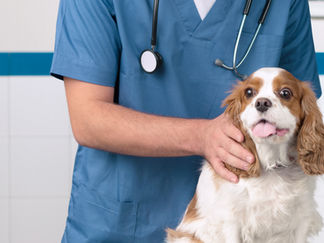

The importance of improving muscle mass after orthopaedic surgery
Muscle wastage is very common after orthopaedic surgery and neurological conditions, such as: · Cruciate ligament repair surgery – suture...
Run Free Vet Physio
Nov 24, 20193 min read
Run Free Veterinary Physiotherapy is run by Amber Pattenden, a fully qualified and Insured Veterinary Physiotherapist. As a VP and member of RAMP (Register of Animal Musculoskeletal Practitioners), IAAT (International Association of Animal Therapists) and the NAVP (National Association of Veterinary Physiotherapists), Amber only works under the veterinary referral of an animal.
Qualifications
Amber is MSc qualified, treating small and large animals. Amber has also completed the rock-tape taping course for the horse and rider to implement into treatment programmes. As a member of the National Association of Veterinary Physiotherapists (NAVP) she attends regular CPD to keep up with the latest research.
After undertaking a BSc (Hons) undergraduate degree she also completed a three-year Msc Veterinary Physiotherapy degree, and continues regular CPD to keep up to date with the latest research in her field. The NAVP are the first governing body to run Veterinary Physiotherapy courses in the country. To be a member you must work within their code of conduct, complete regular CPD and have a level 6 qualification and above - both in clinical and theoretical elements of Veterinary Physiotherapy.
To find out more visit their website: www.navp.co.uk
Find Us On Instagram
FAQs
How can I tell if my pet needs physiotherapy?
Our pets don't always express pain vocally. There are subtle signs and behaviours as owners you can look out for that display discomfort or pain:
Cats & Dogs:
Change in behaviour:
Restlessness
Stiff getting up from laying down or the next day after a walk
Sits to one side
Less friendly aggressive
Lethargy/ sleeping more often
Doesn't like being groomed
Difficulty getting into the car or on sofa.
Exercising:
Starting to tire towards end of a walk
Reluctant to go on walks
Hopping/ skipping with back leg
Reluctant to jump or climb steps
Horses:
Sudden or gradual change in behaviour
Resentment of being groomed, rugged, tacked, girth tightened.
Exercising
Loss of performance
Less forward going
Lack of impulsion
Takes longer to warm up
Knocking poles down or knocking ground poles
Jump refusals
Bucking
Stiffer on one rein
Resenting canter transitions
Finding lateral work more difficult
Evading engagement of a particular hind
Started rushing in pace / bolting